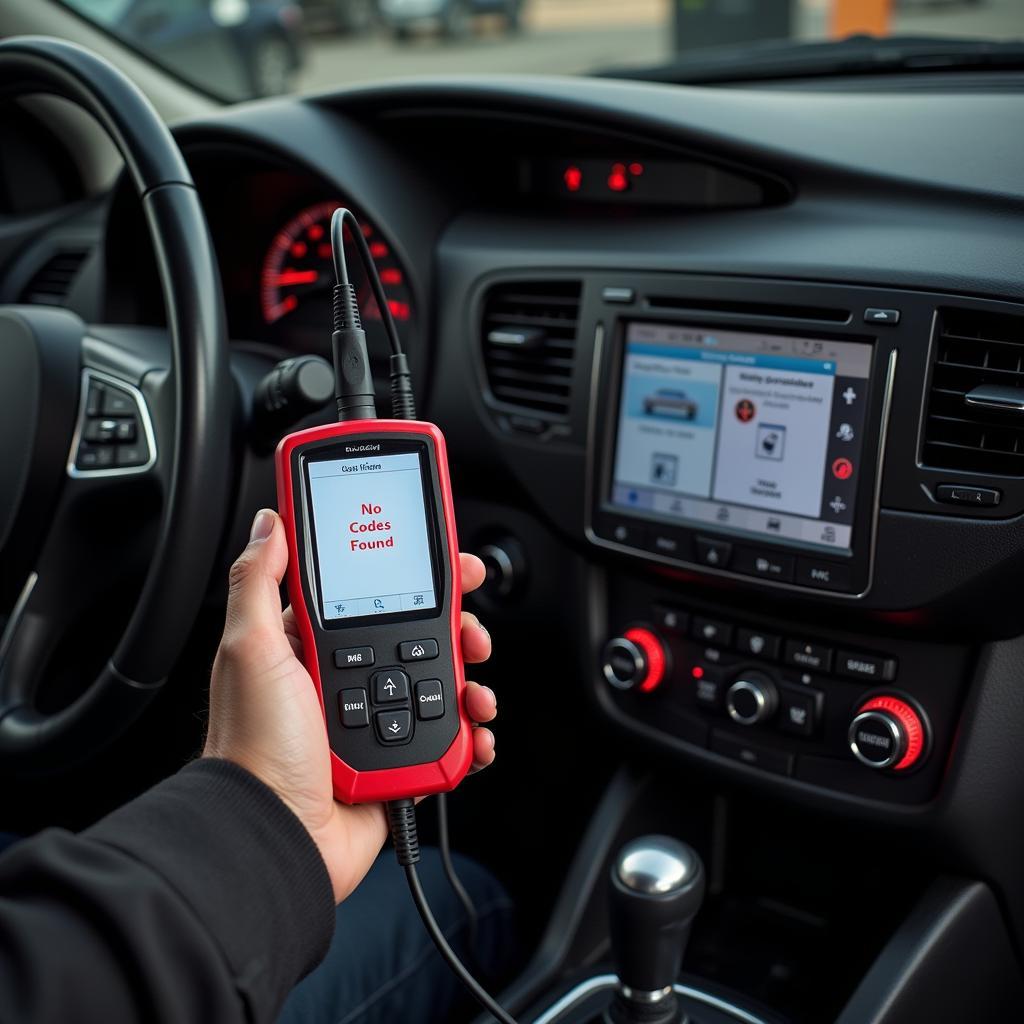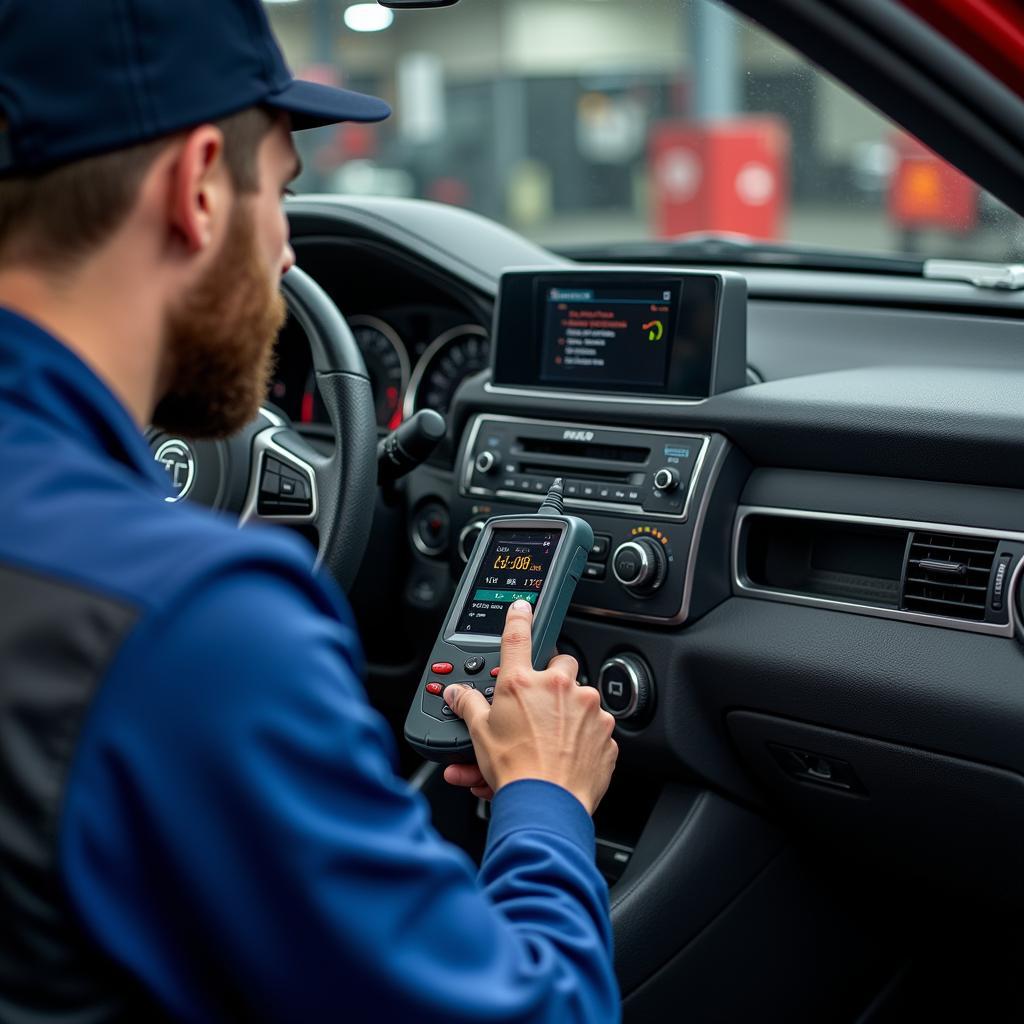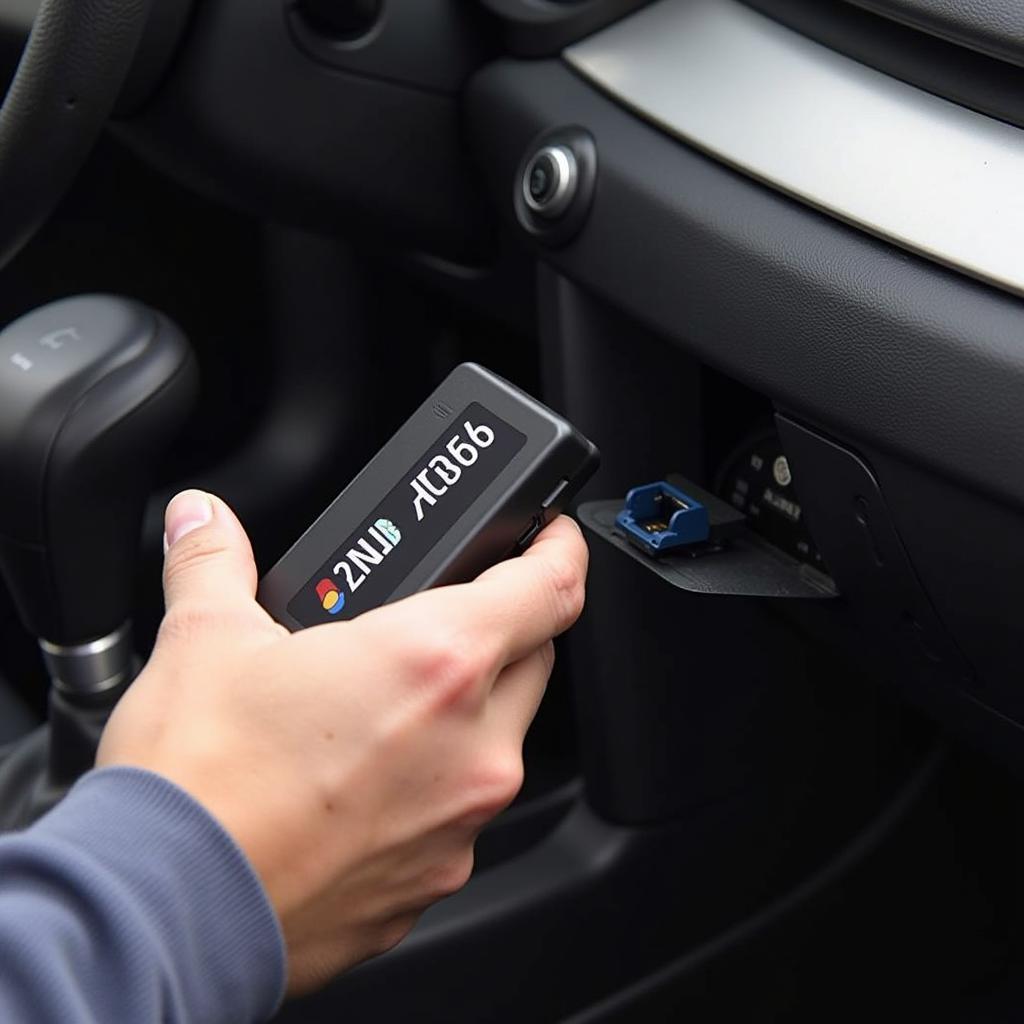A “normal scan tool reading” is the holy grail of car maintenance. It means your vehicle’s onboard computer, the Engine Control Unit (ECU), isn’t detecting any major issues. However, “normal” doesn’t always mean “perfect.” This article delves into the intricacies of scan tool readings, helping you understand what constitutes “normal,” when to investigate further, and how to use this information for proactive car care.
 Normal Scan Tool Readings on OBD2 Scanner
Normal Scan Tool Readings on OBD2 Scanner
Deciphering “Normal”: What Does It Really Mean?
When your scan tool shows “normal” readings, it signifies that all monitored systems are functioning within the predefined parameters set by the manufacturer. These parameters are wide-ranging, encompassing aspects like:
- Engine Performance: Fuel/air mixture, ignition timing, RPM.
- Emissions Control: Oxygen sensor readings, catalytic converter efficiency.
- Transmission: Gear engagement, fluid pressure.
- Braking System: ABS functionality.
- And more: Airbag system, climate control, etc.
Essentially, a normal scan tool reading means your car isn’t throwing any Diagnostic Trouble Codes (DTCs), those pesky codes that illuminate your check engine light.
Beyond the Surface: When “Normal” Needs a Closer Look
While a green light on your scan tool is reassuring, it’s crucial to understand its limitations:
- Pending Codes: Some issues, while detected, may not immediately trigger a DTC. These are “pending codes” that haven’t yet met the criteria to illuminate the check engine light.
- Intermittent Problems: A gremlin that only rears its head occasionally (like a loose connection) might not be present during the scan.
- Mechanical Issues: Not all car problems are electrical or electronic. Wear and tear on components like brakes or suspension might not trigger a code.
- Sensor Malfunctions: Ironically, a faulty sensor could be providing incorrect “normal” readings, masking an underlying problem.
Proactive Maintenance: Leveraging “Normal” Readings
Even with Normal Scan Tool Readings, vigilance is key to car health. Here’s how:
- Regular Scans: Perform scans every few months, even without a check engine light. This helps detect pending codes and identify developing issues.
- Compare Readings: Note any changes in readings over time. Gradual deviations, while still within “normal,” might signal a component nearing the end of its life.
- Data Logging: Most advanced scan tools allow data logging. Recording sensor readings over time can help pinpoint intermittent problems and provide valuable information for diagnosis.
The Power of Context: “Normal” in the Bigger Picture
A “normal” reading on your scan tool is just one piece of the puzzle. Combine this information with:
- Your Car’s History: Past repairs, known issues, and regular maintenance schedule.
- Your Driving Experience: Any new noises, vibrations, or performance changes.
- Visual Inspections: Regular checks under the hood for leaks, wear, or damage.
Going Deeper: When to Seek Professional Help
While DIY car care is empowering, some situations warrant a professional touch:
- Persistent Issues: If you experience recurring problems despite “normal” readings.
- Complex Systems: Diagnosing issues related to transmission, ABS, or airbags often requires specialized equipment and expertise.
- Safety Concerns: Never hesitate to seek professional help for potential safety hazards.
 Mechanic Using Advanced Scan Tool for Diagnosis
Mechanic Using Advanced Scan Tool for Diagnosis
Conclusion
Understanding “normal scan tool readings” empowers you to take charge of your vehicle’s health. While a “normal” reading is reassuring, it’s not a guarantee of perfect condition. By combining this information with proactive maintenance, careful observation, and knowing when to seek professional help, you can keep your car running smoothly for miles to come.
For expert advice on scan tools, diagnostics, and car care, feel free to reach out to us at ScanToolUS at +1 (641) 206-8880. Our office is located at 1615 S Laramie Ave, Cicero, IL 60804, USA.
FAQs
1. Can I rely solely on scan tool readings for car diagnostics?
While scan tools are incredibly useful, they shouldn’t be your only diagnostic tool. Combine readings with your car’s history, driving experience, and visual inspections for a comprehensive picture.
2. How often should I use a scan tool if my car seems fine?
Even without warning lights, it’s a good practice to scan your car every few months. This helps identify potential issues early on.
3. What’s the difference between a “pending code” and a DTC?
A pending code indicates an issue that the ECU has detected but hasn’t yet confirmed. A DTC, on the other hand, is a confirmed issue that will trigger the check engine light.
4. Do all scan tools offer the same features?
No, scan tools range from basic code readers to advanced models with live data, graphing, and special functions. The universal kw850 obd2 obdii car scanner is a great option for car owners. Check out this scan tool comparison of air temp and coolant temp for a deeper understanding.
5. Can I clear a DTC myself?
Yes, most scan tools allow you to clear codes. However, it’s crucial to address the underlying issue before clearing codes. Simply erasing them doesn’t fix the problem. You might find this article on ml350 clearing service with scan tool helpful.
6. Are there specific scan tools for certain car makes and models?
While generic OBD2 scanners work on most cars, some manufacturers use proprietary systems. For deeper diagnostics or programming, you might need a make/model-specific tool. For instance, consider exploring options like cat scans and other diagnostic tools or eve tools to auto scan anomliys.

